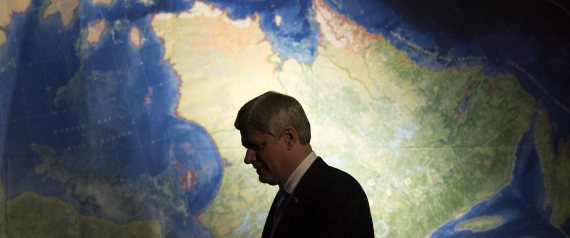Why do so many policies popular with Americans languish in Washington, D.C.? Why, for example, is there no action on a federal minimum wage boost, a breakup of too-big-to-fail banks, or a tax on carbon—all policies favored by a majority of the electorate?
 Ralph Nader argues that both Republican and Democratic leaders are too cozy with large corporations to allow such measures. Each election year, hot-button social issues dominate, and in between, talk show hosts maintain a drumbeat of fear and anger that keeps Americans divided.
Ralph Nader argues that both Republican and Democratic leaders are too cozy with large corporations to allow such measures. Each election year, hot-button social issues dominate, and in between, talk show hosts maintain a drumbeat of fear and anger that keeps Americans divided.
In his book, Unstoppable: The Emerging Left-Right Alliance to Dismantle the Corporate State, Nader lays out a plan for challenging this stranglehold: Noncorporatist conservatives and liberals could join forces to win battles on issues where they agree —especially those focused on economic justice and strengthening democratic rights.
Who would benefit from such an alliance and who would be left out? And could it work? To find out if conservatives are on board, we invited Daniel McCarthy, editor of The American Conservative magazine, to join a three-way conversation with Ralph Nader, erstwhile presidential candidate, and YES! Magazine. McCarthy—a maverick on the right just as Nader is on the left—worked for Ron Paul’s 2008 presidential campaign and has written for The Spectator, Reason, and Modern Age.
Sarah van Gelder: Daniel, your magazine, The American Conservative, includes scathing critiques of U.S. overseas wars, of the use of torture, and of corporate power. So what makes your magazine a conservative publication instead of a progressive one?
Daniel McCarthy: Well, Pat Buchanan is one of our founders. Mr. Buchanan was very critical of the kind of liberalism embedded in corporate culture and of trying to export American institutions to the world at the barrel of a gun.
There’s always been a conservative critique of both big business and crony capitalism, and also of what President Eisenhower called the military-industrial complex. The American Conservative magazine represents that strain of conservatism.
van Gelder: Ralph, in your book, Unstoppable, you discuss at length cherished conservative values and some key conservative thinkers. So are you actually a closet conservative?
Ralph Nader: Well, liberalism and conservatism, in various ways, have been hijacked by corporatism.
Liberalism in the 18th and 19th centuries was the classic philosophy aimed at restraining arbitrary government power—then often exercised by kings and emperors. Civil liberties were the foundation of freedom of speech and due process of law, which became part of our Constitution.
Fast forward, you now have corporate liberals— like the Clintons—and you have the corporatists who call themselves conservatives throughout Congress. They’re all pushing corporate welfare and bailouts for banks.
What we’re trying to do here is go back to fundamental principles and un-hijack conservatism and liberalism. When we do that, we see that there’s a convergence of support on a lot of major issues.
van Gelder: I’d like to go through a few of the 25 proposals from Unstoppable, and ask you, Daniel, whether you agree with Ralph that these are proposals conservatives support. The first one is audit the Department of Defense.
McCarthy: Oh yes, very much so! [laughter] The Department of Defense is a government bureaucracy, and just like any government bureaucracy, it has to be held accountable. It has to be efficient and effective in terms of what is good for the American people and what is good for a genuinely limited foreign policy, not a kind of open-ended ideological foreign policy trying to transform the world.
Nader: And it’s completely out of control! The budget is $800 billion, and often they don’t know where to find the spare parts for the Air Force, or what happened to billions in Iraq. That’s what happens when it’s not audited.
Liberalism and conservatism, in various ways, have been hijacked by corporatism.
van Gelder: So how do you account for the fact that this audit hasn’t happened, given that people on both sides of the aisle would like to see it happen?
McCarthy: Well, the military-industrial complex has a pretty smart strategy. They divided up the manufacturing of armaments into different congressional districts. If the average congressman realizes he has a factory or some other interest within his district, he’s going to be responsive to that interest rather than to the public interest and to the national interest. So you’ve got a lot of money gaming the system and a kind of archipelago of military-industrial outposts that actually wield tremendous influence in Congress.
There’s a lot less money on the side of libertarians and conservatives, and progressives and liberals, who want to restrict the Pentagon.
van Gelder: What about linking the minimum wage to inflation? That’s another item that Ralph Nader proposed.
McCarthy : I think you’d find a lot of conservatives are skeptical of that. They’re afraid that the minimum wage causes unemployment, and they’re very concerned about the idea of the federal government setting the pace for wages in the country.
Nader: Yes, and a new argument, by conservatives like businessman Ron Unz, is that the more the minimum wage catches up with inflation—which, adjusted from 1968 would put it at $11/hour federal minimum, it’s now $7.25/ hour—the less the burden on public assistance paid by a taxpayer—like food stamps, housing assistance, Medicaid, and so forth. That argument has begun to attract more and more thinkers in the conservative arena who believe we should not have taxpayers subsidize Wal-Mart’s low wages with a slew of government subsidies.
van Gelder: What about the notion of breaking up the too-big-to-fail banks?
Nader: That comes in about 90 percent, doesn’t it, Dan?
McCarthy: [laughter] It enjoys a surprisingly large amount of support, at least at the level of a thought experiment. We haven’t seen much progress on that front, but even the American Enterprise Institute—which is a pretty unadventurous conservative think tank—has been very open to the idea of breaking up the large banks.
van Gelder: Dan, would there be support among conservatives for getting rid of corporate personhood?
McCarthy : A lot of conservatives are leery of what would happen if you had a change in our fundamental legal approach to corporations.
Nader: I think this is an area conservatives are beginning to explore. They’re a bit queasy about corporations—which are artificial entities created by the state—having equal constitutional rights with real people. When they see corporate-managed trade agreements, like NAFTA, subordinating local, state, and national sovereignty to the imperatives of global commerce, they get quite upset.
So I think, Dan, in another three or four years we’re going to see more writings under the conservative banner on corporate globalization and corporate personhood.
McCarthy: I think you’re quite right. There’s certainly a question about the nature of the Constitution and personhood. These are things that conservatives need to be thinking about very carefully and systematically, and a lot of what you have right now is a kind of complacency.
van Gelder: Another item from Ralph’s list: rethinking the war on drugs, and I would add to that the very high rate of incarceration we have in the United States.
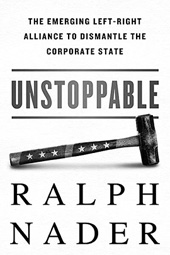 McCarthy : I think this is a really big growth area for conservatives. It brings together Christian conservatives, who see that what we’re doing in our prisons has no restorative element—it’s at times a sadistic approach, just sweeping people under the rug. And also, of course, libertarians have been very critical both of the war on drugs and of the prison system for a very long time.
McCarthy : I think this is a really big growth area for conservatives. It brings together Christian conservatives, who see that what we’re doing in our prisons has no restorative element—it’s at times a sadistic approach, just sweeping people under the rug. And also, of course, libertarians have been very critical both of the war on drugs and of the prison system for a very long time.
It should be pointed out, too, that it’s not just conservatives who have been slow coming around to this. Under President Clinton, for example, in the 1990s, we had a great increase in incarceration and in war-on-drugs activity.
Nader: Conservatives are working with progressives and liberals in state legislatures to reduce the horrendous, long jail sentences for juveniles possessing marijuana or heroin. And we have Grover Norquist, Newt Gingrich, and others forming Right on Crime, which is designed to reduce the number of nonviolent convicted inmates in prisons by hundreds of thousands in order to save taxpayer money.
But it’s interesting that the more they talk with liberals and progressives who have been at this a little longer, the more you even begin to hear from people like Newt Gingrich that there’s a human rights element to this, too, not just an efficiency element. Once people start talking with one another, they educate and inspire one another, and move to even higher levels of convergence.
van Gelder: So another topic Ralph listed in his book is the protection of the environment. Daniel, is that something that conservatives are concerned about?
McCarthy: It certainly is. I know there’s an example that Ralph relates in Unstoppable about a debate he had with conservative economist Milton Friedman where Friedman admitted, yes, you do need to have government regulation of pollution; this is not something that takes care of itself. Conservatives do acknowledge that, but at the same time they also worry about the propensity of any federal bureaucracy to be inefficient and misplace its priorities, and the possibility of regulation being captured by politically influential industries and used to fight small industries.
Nader: But Sarah, a more intriguing thing is climate change. This is where you have conservatives constantly saying it’s a hoax, or it hasn’t been proven, or it’s not man-made. And the question I ask them is, at what point will you be persuaded? I mean, you have the vast majority of scientists who say it is heavily based on activities of human beings, and there’s still a huge portion of the population that refuses to believe that. So is that ideology? I don’t know. What do you think, Dan?
McCarthy: It’s anti-elitism. On one hand you have business interests that have a very hard view on this. But then you also have people who think that just because a bunch of academics and scientists say something, that doesn’t mean that we should believe it. We don’t live in a technocracy where credentialed experts are the ones who dictate public policy.
So, it’s a cultural divide, and also about education blocs and about different geographies within the country.
There’s a lot of noise generated to prevent Americans, especially on the right, from taking seriously some of the things that scientists say. But it also needs to be mentioned that too many people on the left have a dismissive attitude toward evangelicals and anyone who doesn’t agree with them. There is a responsibility on the part of everyone to communicate with their fellow citizens. I think that’s where this debate has often fallen down.
van Gelder: Let me ask about a demographic divide. There are few people of color and few women leading on the conservative side. Do you believe this is for policy reasons, or cultural reasons, or for historic reasons?
McCarthy: Well it’s a bit of both. Obviously the South is aligned with the GOP, which in turn is aligned with conservative rhetoric, which makes the GOP and by extension, mainstream conservative rhetoric, seemingly the party of the South and the party of the historic white majority of the country.
The second thing is a certain kind of time lag difference. Conservatives are still thinking of the country in terms of the way it looked back in the 1980s. Certainly all the talk about Ronald Reagan on the right reinforces the idea that that is the America that is, was, and always will be, when in fact we have a much more diverse America today, and we’re going to have an even more diverse America in the future.
Nader: When Democrats started to dial for the same corporate dollars around 1979 as did the Republicans, economic issues that relate to corporatism were taken off the table. Campaign rhetoric shifted to social issues. This was illustrated some years ago when a reporter asked Senator James Inhofe, Republican of Oklahoma, how he kept winning elections, he said, “Oh it’s very easy: God, gays, and guns.”
There is a responsibility on the part of everyone to communicate with their fellow citizens.
So poor West Virginians, for example, who were not given an opportunity to vote on economic issues in the last election, gravitated to the more traditional appeals symbolized by Inhofe’s triad and other non-economic appeals.
McCarthy: Yeah, the two parties and the bipartisan elite have had their own kind of convergence on a strategy for dominating the country, both in government and in big business.
Americans of all ideological stripes have been feeling a great deal of alienation, resentment, and anger. But it’s very difficult to talk about the actual structure of government and of the economy and to explain how it is that people have been effectively disenfranchised and manipulated. It’s much easier on both the left and the right to focus on cultural issues, where you can have scapegoats and think that those are the central issues, and to ignore these more structural problems.
I think the left’s embrace of identity politics in the 1960s and ’70s was disastrous for the working class. It was very bad for the labor union movement, it was very bad for any number of economic issues. Which is not to say that there wasn’t a place for the civil rights movement. Of course there was. But identity-based politics went from being a necessary thing to being something that started to preclude some of the economic and other policy efforts that needed to be undertaken.
And similarly on the right. It’s not just a matter of a cynical manipulation of the public by going for hot-button issues. There really was a sense among many ordinary people in the 1960s that something had gone culturally wrong in the country. Crime rates were going up, promiscuity was going up. There were changes that people found weird or disorienting. Whether or not they were right or wrong, they were unfamiliar and new, and therefore alarming.
This set of emotional complexes was turned into the so-called culture war, to the detriment of anything that would reform our economy, our self-government, or our foreign policy. Those sort of complex issues have been thrown by the wayside in favor of identity politics.
Nader: I think one additional thing is that the more we go down the abstraction ladder, to where people live, work, and raise their families, the more convergence there is. So they may be divided over regulation of the auto industry, but when you say, “If you’ve got a defective car, don’t you think it should be recalled, and if it isn’t recalled voluntarily, don’t you think there should be legal requirements?”
van Gelder: Fair enough, Ralph, but on the question of women, I wonder how much of the disorientation Daniel was talking about was because women were adopting a new role in society and also in the family. Because that gets very far down the level of abstraction to where people live.
There’s a need for people of goodwill across the spectrum to recognize the quieter voices on the right that are trying to work on this.
Nader: Yeah, very much so. I mean, one is that there’s a lag. There were patriarchal traditions, less in some of the cities and more in the rural areas. But there was a tradition that the woman stayed home and raised a family, and when the wave of women’s rights hit in the late ’60s and early ’70s, that was a very jarring impact, especially on women who were at home and raising families.
van Gelder: There are some other kinds of things too that are very tangible and very measurable, like that young black men are 21 times as likely as white men to be shot and killed by police. And yet, I don’t hear conservatives calling that out. And when disparaging language is used to refer to public figures who are people of color, or to people like Michael Brown, describing them as thugs, I don’t hear people on the right saying, this is not the kind of society we want to have.
McCarthy: Well, it takes a lot of careful listening. The problem is that the loudest voices on the right, Rush Limbaugh and Fox News, are the ones who are least likely to reflect on what’s going on here. So I think good work is being overlooked simply because it doesn’t have a megaphone.
There’s a need for people of goodwill across the spectrum to recognize the quieter voices on the right that are trying to work on this, because otherwise they get ignored.
I know a lot of grassroots conservatives jump to conclusions when they see quite legitimate criticisms of police overreaction to the protests in Ferguson, Missouri, and things like that. A lot of conservatives think we’re going to be accused of racism even if we don’t side with the police, or if we aren’t enthusiastic enough about the protests.
And there are of course racists who, for the worst reasons possible, support all sorts of brutal policies. But the average conservative isn’t like that; the average conservative is looking at these things as archetypal confrontations, as opposed to seriously looking at the specifics, and that allows a lot of confusion.
van Gelder: What will it take to get the populist right and left to actually get together and get some things done?
Nader: Well, I don’t think it’s going to happen just because 80 or 90 percent of the people, left-right, agree on a direction for the country. I think the corporatist control of both parties and much of the corporate media cuts off that convergence at the pass. So my proposal is to have intermediate civic institutions whose only goal is to further existing public opinion, left-right convergence, on issue after issue.
We now have an agreement between Cato and Heritage on the right, and Public Citizen and Common Cause against corporate welfare. They all put out reports years ago! But that’s not their priority when they get up in the morning. They have other priorities: A. Responding to where their funding comes from, and B. Pursuing very serious disagreements between left and right that take priority day after day.
So I think we need to have exclusive citizen nonprofit advocacy groups just focused on furthering left-right convergence policies that they make operational.
van Gelder: Dan, do you think this could work?
McCarthy: Well, I think a lot of the things Ralph has said point in the right direction: start at the local level, start with specific issues. Don’t try to form a grand ideological coalition. Discover the common ground that already exists, especially at the most practical levels.
The other thing is that you’ve got to cease being afraid of the other side. You’ve got to actually meet these people and realize, OK, I may disagree with them, they may be wrong about some things, but these are people of goodwill who are capable of being reasoned with.
Once people start talking with one another, they educate and inspire one another, and move to even higher levels of convergence.
I think that it’s very easy for us all to kind of reflexively fall back on, well, the NRA is the source of evil, or the EPA is the source of evil, when in fact, what we need to ask is, what do the American people want? And then, what do our principles tell us ought to be pursued?
Nader: You know, the auto safety legislation that I proposed in 1966 passed the House of Representatives either unanimously or with one dissenting vote. We got the Freedom of Information Act through Congress with left-right support. We got the False Claims Act in 1986, which has saved tens of billions of dollars because it gives whistleblowers the right to join with the Justice Department going after corporate fraud, for example, on Medicare or on defense contracts. There are a lot of examples where it’s already happened.
I think the most important thing is to put on the table the following: We’re going to continue to disagree on reproductive rights, school prayer, and a constitutionally required balanced budget. But here are the areas we agree on.
The question is, do you want to win in these areas: an audit of the Pentagon, a pullback on the empire, de-bloating the military budget. … Yes? Well, we’re not winning. The left is not winning and neither is the right winning. But together, they present what I consider an unstoppable majority.
I don’t see any other political realignment coming along. You can’t win by just being a Republican or a Democrat. They’re too indentured to commercial and other interests. They’re too stuck in their own careerism—in being re-elected. They’re too close to the military-industrial complex. So the only way I see a political realignment here is in the left-right.
McCarthy: I would say that both left and right have to be willing to be as critical of the people on their own side who abandoned principle as they are of people on the other side who have opposite principles.
So, to give one example, are conservatives serious about federalism? And if that’s the case, they should be asking why Republicans in Congress are trying to overrule the people of Washington, D.C., on marijuana policy.
And on the left, there have been far less intense protests about Obama’s wars and drone policies than we saw during the Bush years.
Each side, the left and the right, is willing to let its own unfaithful allies get away with murder.
Politics has become fighting for the sake of fighting for at least 30 years, and I think the results speak for themselves. Whether it’s foreign policy, whether it’s the economy—the country is in bad shape and it could get a lot worse. Both left and right are failing to achieve their own objectives with a strategy of conflict.
If that’s the case, then why are we continuing with this whole kabuki act? Why are we still having the same conflicts, using the same ritual language to denounce the other side, restating our own terms and our own principles in absolute terms that people who don’t buy into them can’t possibly work with? We have to look at a new kind of strategy. Ralph’s convergence idea is at least a starting point. SOURCE

 Julia O’Sullivan is the third dean of the Ontario Institute for Studies in Education (OISE) of the University of Toronto, and senior fellow at Massey College of the University of Toronto.
Julia O’Sullivan is the third dean of the Ontario Institute for Studies in Education (OISE) of the University of Toronto, and senior fellow at Massey College of the University of Toronto. The Right Honourable Paul Martin served as the 21st Prime Minister of Canada, and is the founder of the Martin Aboriginal Initiative. For more information, visit paulmartin.ca.
The Right Honourable Paul Martin served as the 21st Prime Minister of Canada, and is the founder of the Martin Aboriginal Initiative. For more information, visit paulmartin.ca.

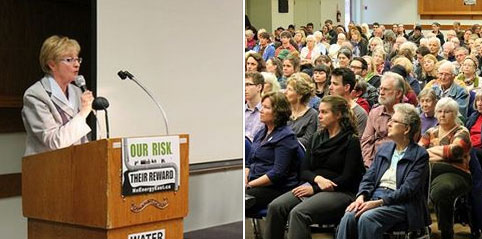

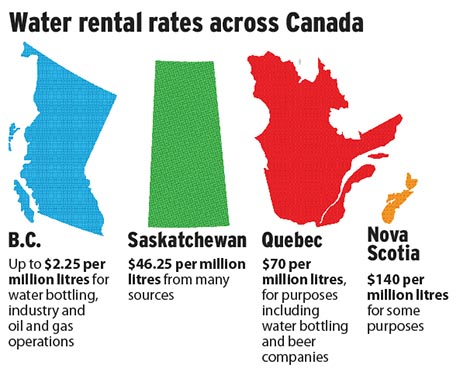 A Ministry of Environment spokesman said the new fees and rentals have been set to cover the cost of administering the new WSA, estimated at $8 million per year.
A Ministry of Environment spokesman said the new fees and rentals have been set to cover the cost of administering the new WSA, estimated at $8 million per year.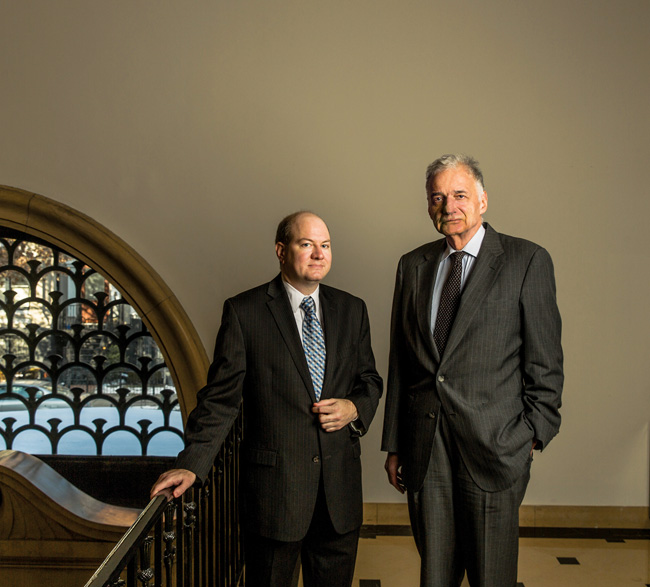

 McCarthy : I think this is a really big growth area for conservatives. It brings together Christian conservatives, who see that what we’re doing in our prisons has no restorative element—it’s at times a sadistic approach, just sweeping people under the rug. And also, of course, libertarians have been very critical both of the war on drugs and of the prison system for a very long time.
McCarthy : I think this is a really big growth area for conservatives. It brings together Christian conservatives, who see that what we’re doing in our prisons has no restorative element—it’s at times a sadistic approach, just sweeping people under the rug. And also, of course, libertarians have been very critical both of the war on drugs and of the prison system for a very long time.
